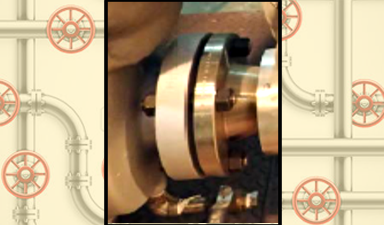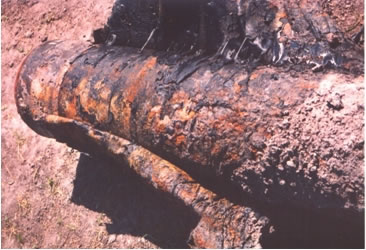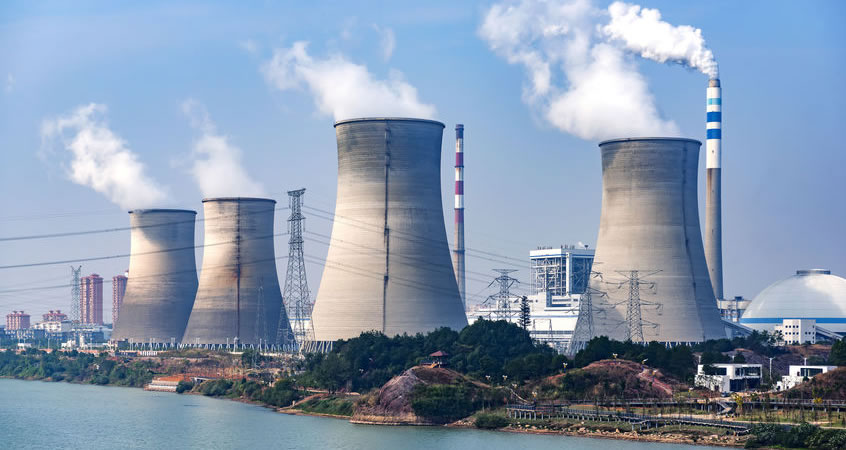Differential Thermal Expansion: A Challenge to Flange Joints

by George Antaki and Jeremy Lundquist
It is not uncommon to use B7 low alloy high-strength bolts on stainless steel flanges. If that is the case, and if the flange operates at high temperature, then the thermal expansion-induced stress in the bolt should be checked.
Consider, for example, a stainless steel flange SA-182 Grade F304, with SA-193 Grade B7 bolts, in a line that operates at 600oF. The line is insulated, so both the flange and its bolts will be at 600oF during steady-state operation. In hot operation, the stainless steel flange wants to expand more than the low alloy steel bolt. This will induce a tensile stress in the bolt equal to:
σbolt = Eb × (αflange – αbolt) × ∆T
Where Eb = modulus of elasticity the bolt at 600oF = 26.9E6 psi; aflange = coefficient of thermal expansion of the stainless steel flange = 9.9E-6 1/oF at 600oF; abolt = coefficient of thermal expansion of the low alloy steel bolts = 7.4E-6 1/oF at 600oF; DT = temperature rise of the flange and bolt = 600oF – 70oF = 530oF. The physical properties are obtained from ASME II Part D Table TM-1 for the moduli of elasticity at temperature, and Table TE-1 for the coefficient of thermal expansion.
σbolt = 26.9 106 × (9.9-7.4)10-6 × 530 = 35,643 psi
If the bolt was initially torqued to, for example, 55 ksi, the total stress would be approximately 91 ksi, compared to the bolt material minimum specified yield strength at 600oF of 85.3 ksi (ASME II Part D Table Y-1.) There is therefore a possibility that the bolt will yield, and as the flange assembly cools down during a shutdown the permanent plastic deformation of the bolts will relieve the compression on the gasket, potentially causing a leak.
Have a question or would like more information? You may post to this blog or click the link below for more help.







So what are the mitigation measures to avoid this scenario and leakage?
If the flange is in a service where delta-T is sufficiently large so that stress-preload (depends on the initial torque) + stress-bolt (depends on delta-T) exceeds yield, use stainless steel bolts (not Cr-Mo bolts) on stainless steel flange.
Good article. As always.